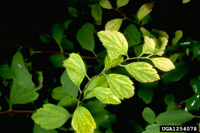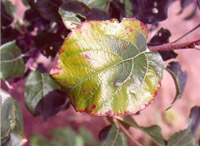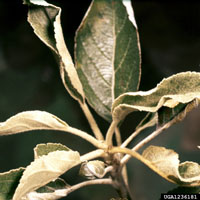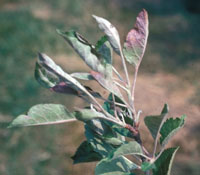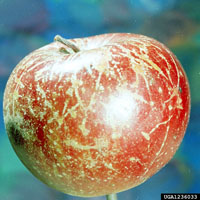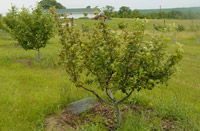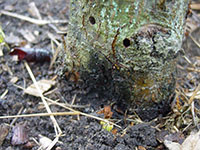Extension > Garden > Diagnose a problem > What's wrong with my plant? > Fruit > Apple > Yellowing leaves
Apples > Leaves > Yellowing leaves
1 of 4
Iron Chlorosis
- Newest leaves towards ends of branches are generally yellowed, while leaf veins remain green (interveinal chlorosis)
- More common in western Minnesota
- More information on Iron Chlorosis
2 of 4
Honeycrisp Leaf Mottle Disorder
(Honeycrisp Chlorosis)
- Leaves become a mottled yellow color in mid July
- Symptoms more pronounced in trees with a light crop
- Does not affect fruit quality
- More information on Honeycrisp Leaf Mottle Disorder
3 of 4
Powdery Mildew
Podosphaera leucotricha
- Part or all of infected leaves are covered in white-gray, felt-like patches
- Infected leaves will curl, twist, or fold upward
- Infected blossoms are distorted, discolored, and covered in white powdery fungal growth
- Infected fruit have bronze, corky streaks, that are skin deep
- More information on Powdery Mildew
4 of 4
Roundheaded Appletree Borer
Saperda candida
- Foliage becomes sparse, pale colored, and eventually turns yellow
- Reddish brown frass (sawdust and droppings) can be present on bark near base of tree
- Branch dieback occurs as infestation becomes more severe
- ¼ inch round holes present in trunk; Large tunnels found in sapwood
- Adults are ¾ inch long, white and brown striped body with long antennae; active June to August
- Larvae are up to 1+ inches long, cream colored, round and plump and legless; because life cycle takes two years or more, larvae are present in wood at any time of year
- More information on Roundheaded Appletree Borer



